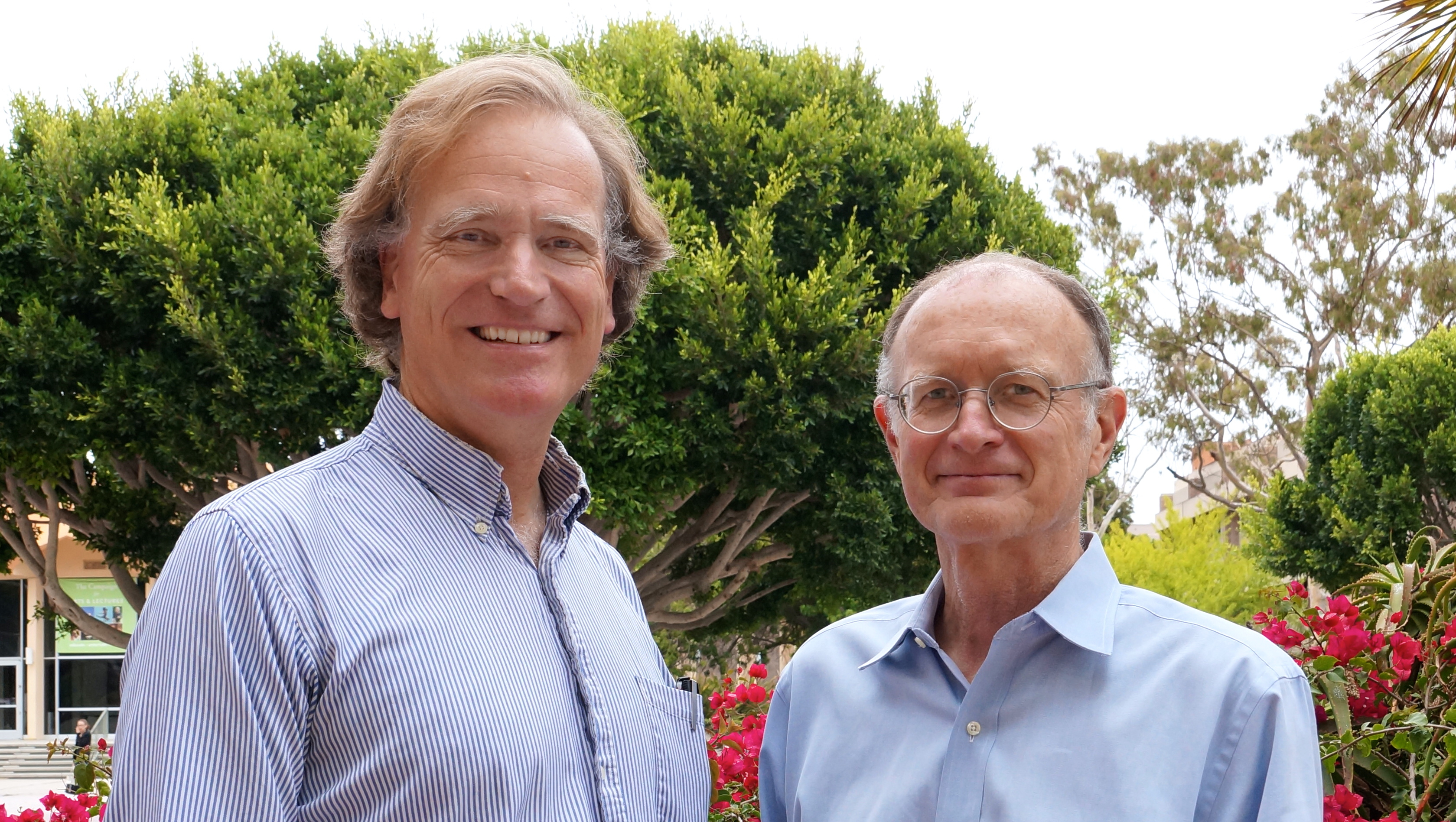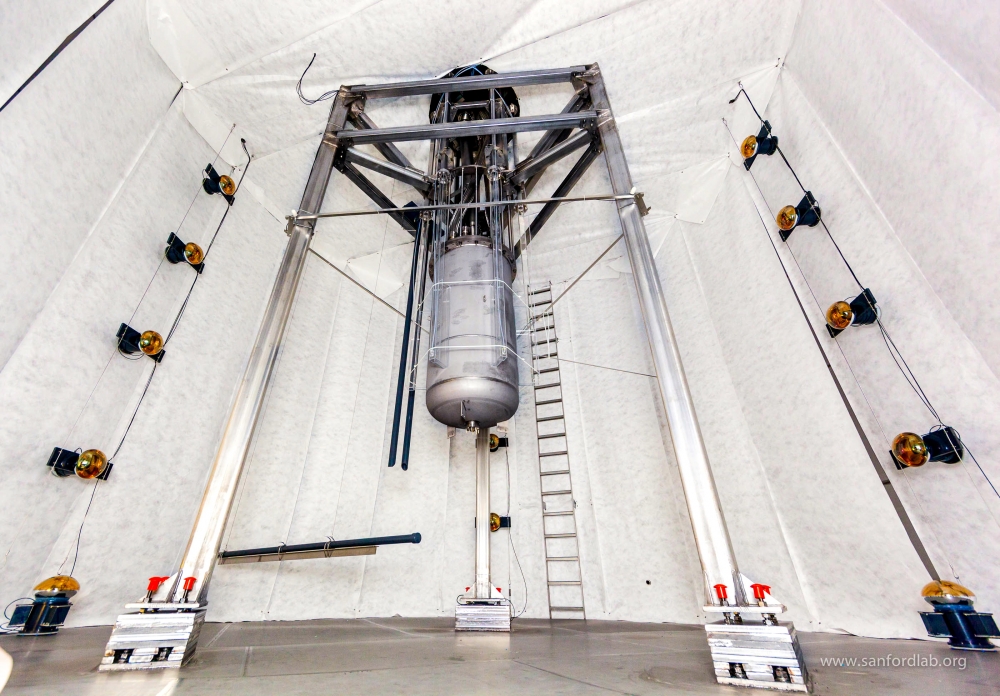In Search of Elusive Dark Matter

While scientists have long known that dark matter exists, they have never been able to touch it. That could change, however, with the development of what might one day be the biggest and most capable dark matter experiment in the world.
The Department of Energy (DOE) and the National Science Foundation (NSF) last week announced funding for the second-generation Large Underground Xenon (LUX) experiment, dubbed LUX-ZEPLIN (ZonEd Proportional scintillation in LIquid Noble gases). UC Santa Barbara physics professor Harry Nelson is the scientific leader of the LUX-ZEPLIN (LZ) collaboration, and UCSB physicists, who led the design and building of LUX’s ultrapure water tank, will design a new element for LZ.
The LUX site, located a mile deep in the Black Hills of South Dakota at the Sanford Underground Research Facility, will also be used for the LZ experiment. When completed, LZ will be the largest dark matter detector in the world.
Dark matter — the predominant form of matter in the universe and so named because it neither emits nor absorbs light — has been observed only through its gravitational effects on galaxies and clusters of galaxies. However, physicists do not know what constitutes dark matter.
The leading theoretical candidates for dark matter are weakly interacting massive particles (WIMPs), so-called because they rarely interact with ordinary matter except through gravity. Finding WIMPs is the aim of both LUX and LZ.
The LZ detector — 20 times bigger than LUX’s — will utilize seven tonnes of active liquid xenon. Xenon is a chemical element found in trace amounts in Earth’s atmosphere. If a WIMP strikes a xenon atom in the detector, it recoils from other xenon atoms and emits photons (light) and electrons. The electrons are drawn upward by an electric field and interact with a thin layer of xenon gas at the top of the tank, releasing more photons.
The light signals are detected by 488 photomultiplier tubes, which are deployed above and below the liquid xenon. The locations of photon signals — one at the collision point, the other at the top of the tank — can be pinpointed to within a few millimeters. The energy of the interaction can be precisely measured from the brightness of the signals, which ensures that each WIMP event’s unique signature of position and energy will be precisely recorded.
Experiments such as LUX and LZ are situated deep underground in order to shield the detectors from cosmic rays, which can produce false results. However, radiation from the natural decay of uranium and thorium in the surrounding material, which can also produce false results, still remains. To combat this, the LZ detector will employ additional layers of particle detection outside the seven tonnes of liquid xenon in the heart of the detector.
The UCSB group will design the outer detector to contain scintillator liquid, a clear oil that lights up when a neutron or gamma ray interacts with it. All of the LZ detector is immersed in a large tank of ultrapure water.
Michael Witherell, vice chancellor of research and a professor of physics, is the current project manager for LZ’s outer detector. “We are designing nine big acrylic (Plexiglas) vessels to hold 27 tons of scintillator liquid,” he said.
“Once the vessels are built, we have to get them into the tanks and assemble them very carefully,” Witherell explained. “We have to fill the outer detector with the scintillator liquid simultaneously with the water tank because we have to keep the pressure even on both sides. This is a mechanical engineering challenge, and UCSB is well-equipped to meet it because we have good mechanical engineers working with our LZ group.”
LZ will be more sensitive to dark matter than the ultimate LUX result by a factor of 100 and more sensitive than the present LUX result by a factor of 500. “We project that a three-year run of the LZ experiment will achieve a sensitivity close to fundamental limits from the cosmic ray neutrino background,” said Nelson, who helped design, build and fill the sophisticated water tank that houses the LUX experiment and will also be used in the LZ detector.
“Our dream would be after about a year’s worth of data that there would be a signal of dark matter,” Nelson said. In fact, LZ’s greatly improved sensitivity to dark matter may one day allow scientists to observe up to five events over a three-year experiment period. “That’s how rare a dark matter event is,” Witherell said.
The schedule for building LZ will depend on when the funds become available, but according to Nelson, the DOE and NSF intend to fully fund the project. That means that UCSB could be ready to start building the biggest components in 2015 and get to the point of bringing the detector into operation in early 2018.





